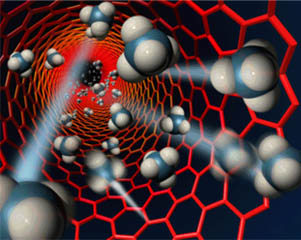 How Helium Can Be Solid And Perfect Liquid At Same Time, Now Explained By Computer-assisted Physics
How Helium Can Be Solid And Perfect Liquid At Same Time, Now Explained By Computer-assisted PhysicsEnquiries from the armed forces
However, the word can be misunderstood, as was discovered by one of Troyer’s colleagues who works on the phenomenon in the USA. The US Navy thought that “supersolid” meant “extremely hard” and so asked the physicist whether such a material could be used to armour ships or at least put into a spray can or be used to kill someone. The physicist answered “No” – because “supersolid” does not mean super-hard. After that, the army showed no further interest.
The researchers carry out fundamental research and no direct applications for “supersolidity” are yet on the horizon. At the same time, a group of physicists led by Matthias Troyer has shed light on how the phenomenon occurs. Their results have been published in a series of articles in Physics Review Letters. The first author of the article is post-doctoral researcher Lode Pollet, who has since moved from ETH Zurich to the Universities of Massachusetts and Harvard University in the US. He is in discussions for a professorship, even though he is not yet thirty.
An incorrect explanation
Theoreticians first predicted the “supersolidity” phenomenon in 1969. Their explanation was incorrect, but this escaped notice for some time. The first evidence for “Supersolidity” was measured in an experiment only in 2004. This involved attaching a disc-shaped helium crystal to a spring and rotating it to and fro. In this arrangement, the vibration frequency depends on the rotating mass. The researchers found that the frequency became higher if they cooled the apparatus down to below 0.2 Kelvin – almost down to absolute zero. Part of the mass no longer participated in the rotation; it behaved as a superfluid, meaning it behaved like a friction-free liquid. In other words, it had become “supersolid”.
Up to this point, the measurements were still in line with the theory, but further experiments showed that the proportion of the crystal that became supersolid increased with the number of defects in the crystal. However, the theoreticians who predicted the phenomenon had done their calculations using perfect crystals, ones totally free from defects.
No effect with perfect crystals
At this juncture, the problem became interesting for the computer-assisted physics group led by Matthias Troyer at ETH Zurich and their colleagues in the US and Canada. Although the physicists also carry out experiments, they do so on computer models rather than on the material itself. This allows them to monitor the crystal more closely. For example, they experimented with crystals free from impurities, i.e. perfect crystals of the kind that cannot be grown in the laboratory. No “supersolidity” occurred here.
However, the scientists also grew virtual crystals with defects, for example by orienting the structure of one half of the crystal in a different direction to the other half. They performed this experiment using about one hundred variations with different temperatures and orientations. The result: “supersolidity” occurred where the layers of atoms with different orientations came together, and did so only if the layers did not fit together particularly well. This meant that it depended on the defects, exactly as in the laboratory experiments.
At US customs
Initially, these results were met with rejection from a few scientists. The fact that the phenomenon was possible only when impurities were present did not fit with the view held by the theoreticians, who usually ignore impurities in their considerations. However, the explanation has since gained wide acceptance.
Scientists are not the only people interested in the physicists’ results. When Lode Pollet arrived in the US, a customs officer asked him whether he was the man who worked on this material that was solid and liquid at the same time. Clearly, the American government has not yet lost interest completely.





 The technology of nanotubes is becoming quite crucial these days as it has multiple uses in various fields.
The technology of nanotubes is becoming quite crucial these days as it has multiple uses in various fields.


